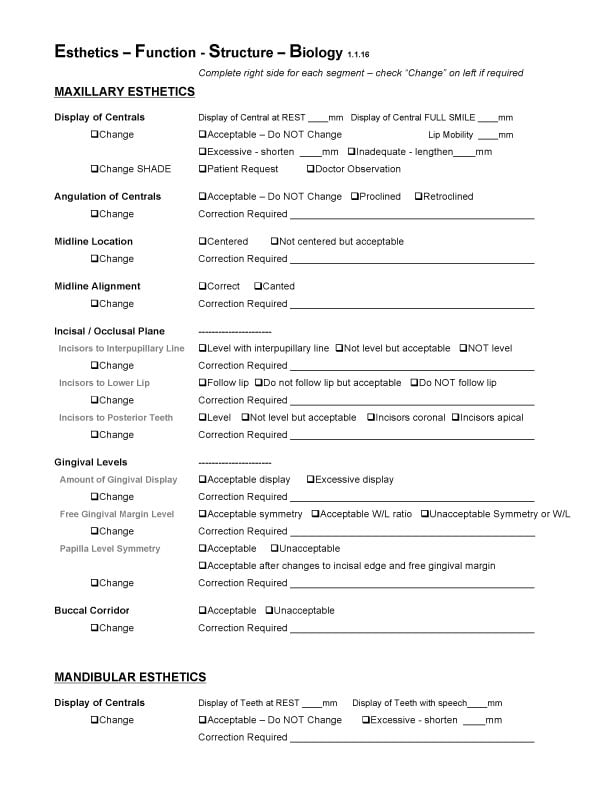“Trust the force Luke” is a very famous line from the movie Star Wars. “Trusting the force” in diagnosis and treatment planning usually begins with AESFB (Airway, Esthetics, Structure, Function and Biology). If airway is not a concern, we move on to esthetics.
We start by determining where the incisal edge of the maxillary central incisors should be placed. Frank Spear wrote a great article for Spear Digest outlining how to finalize the edge position.
One photograph used to help determine the incisal edge position is lips at rest. Using esthetic guidelines of where the edge should be is based upon age and gender. When we determine this edge position, we get an idea of where to start. But when we cannot see the edge in the lips at rest photo, what do we do? The edge may be under the upper lip or tucked below the lower lip.
My experience tells me that a hidden edge is more common with the upper lip than the lower lip. I see this in our aging population and in wear cases where our patients’ teeth are too short. Today when I see anterior wear without posterior wear, I also have to consider that there may be an airway issue as a factor in the wear pattern. Often the A and E go hand-in-hand.
Many people use a periodontal probe to measure how far under the lip the incisal edge is located. Probes do not work well in my hands (or my assistants), because it is easy to fall off the edge with the tip of the probe, making it challenging to get a usable photo.
So in my quest to create some stability and make this photo easier for me and my team, we created a flat-edge millimeter ruler with some surface area that can stay on the edge and has some thickness. I found that an aluminum triangular ruler would allow me to create such a device. The $2.99 we invested on Ebay, which included free shipping, gave me several lips at rest rulers. They sterilize easily and are a part of our photographic set-up. I used a metal cutting wheel and polished the sharp edges with a dental lathe.


The photos below demonstrate its use. Knowing that the incisal edge is a millimeter below the lip, we may choose to test out how the incisors will look and function 1.5 to 2mm longer.


Then there are times when the incisal edge is somewhat hidden by the lower lip. In these cases, we get a sterile permanent market from our assistant’s pocket and draw a line where we believe the edge should be.


We then measure the distance from the edge to our mark. Now we have information to help us determine if we should reposition the edge apically three millimeters.

My aluminum modified millimeter ruler and our sterile permanent markers are just two of the non-dental dental supplies I use. Be creative - it will show in all that you do.
Carl E Steinberg, DDS, MAGD, LLSR
www.DentistryinPhiladelphia.com
FREE DOWNLOAD: EFSB Guide
Wouldn't it be great to see cases in such a way that treatment is self-evident? That is what this Esthetics – Function – Structure – Biology (EFSB) Guide was designed to do. Restorative dentists can combine this guide with treatment planning using templates for a repeatable system that becomes a natural way of thinking.
DOWNLOAD NOW